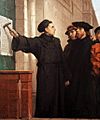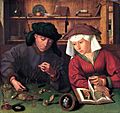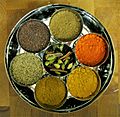Early modern period facts for kids
The Early Modern period was a really important time in history. It lasted from about 1500 to 1800. This era came right after the Middle Ages. It's when many of the countries we know today started to take shape. This period saw big changes like the Renaissance (a time of new ideas in art and science) and the Age of Discovery. People explored new parts of the world, like America, and found new sea routes to places like Asia. This exciting time ended around the French Revolution in 1789.
Europe's Big Changes
In 1453, a major city called Constantinople was taken over by the Ottoman Empire. Around this time, Europe saw huge improvements in science, how people traveled (transport), and how they shared information (communications). This period is also known as the Renaissance, a time of great learning and art.
For European countries with many ships, this was the Age of Discovery. They started exploring and expanding into new lands, often called the New World. Trade with Asia became very common. Europeans found new sea routes around Africa and into the Indian Ocean. Later in this period, European countries began setting up colonies in these new places.
Asia's Powerful Empires
Asia also saw big changes during the Early Modern period. The Mughal Empire began in 1526. This empire had a well-organized government. It also saw a lot of economic growth and was known for being religiously tolerant. Asia was doing very well in mathematics and science at this time.
The Ottoman Empire ruled much of the Middle East. The Persian Empire was also very powerful. In China, the Ming dynasty saw cities grow as more people lived there. Small industries making things like paper, silk, cotton, and porcelain became important.
China's trade with European countries like Portugal, Spain, and the Netherlands grew a lot in the 16th century. This trade brought a huge amount of silver into China. China needed silver because its paper money system had problems. The silver helped China's economy greatly.
Related Pages
Images for kids
-
A painting showing the Qing Chinese celebrating a victory over the Kingdom of Tungning in Taiwan. This work was a collaboration between Chinese and European painters.
-
The Great Wave off Kanagawa, c. 1830 by Hokusai, an example of art flourishing in the Edo Period.
-
Map of the Gunpowder Empires, with the Mughal Empire shown in orange.
-
The Mughal ambassador Khan'Alam in 1618 negotiating with Shah Abbas the Great of Iran.
-
Robert Clive and Mir Jafar after the Battle of Plassey, 1757 by Francis Hayman.
-
Ferdinand Pauwels – Martin Luther hammers his 95 theses to the door.
-
Cossacks became the backbone of the early Russian Army.
-
Axum and Adal circa 1500.
-
John Trumbull's Declaration of Independence, showing the Committee of Five presenting their work to the Second Continental Congress in 1776.
-
Model for the Three Superior Planets and Venus from Georg von Peuerbach, Theoricae novae planetarum.
-
Gold fueled European exploration of the Americas. Explorers reported Native Americans in Central and South America had large amounts.
-
Silver, a precious metal, used for ornaments, jewelry, tableware, and currency coins.
See also
 In Spanish: Edad Moderna para niños
In Spanish: Edad Moderna para niños





















